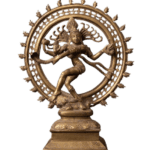One of India’s most renowned and ancient classical dance genres is bharatanatyam. The dance style is distinguished by its deft footwork, elegant hand gestures, expressive face expressions, and body motions that represent a narrative or a point. This article will examine more closely at the development of Bharatanatyam throughout its history.
Origins of Bharatanatyam Dance
Bharatanatyam has its roots in the South Indian temples, particularly those in Tamil Nadu. Devadasis, who were temple dancers devoted to serving the gods, performed the dance in its original incarnation. The Devadasis were renowned in society for their talent and devotion, and Bharatanatyam was performed as a form of worship. The Chola dynasty, which ruled from 9th to 13th century, saw the dance genre bloom and grow to be an essential component of festivals and rites at temples.
Decline and Revival of Bharatanatyam
Due to the negative social perception of the Devadasi system at the beginning of the 20th century, Bharatanatyam experienced a period of decline. Additionally, temple dancing was discouraged by British colonial authority. As a result, the dancing style disappeared and was primarily practised in personal settings.
E. Krishna Iyer and Rukmini Devi Arundale led a group of reformers who worked to reestablish Bharatanatyam as a respected art form in the 1930s. By severing the dance’s ties to the Devadasi system and making it more widely available, they hoped to reform it. Additionally, they gave the dance form new topics and concepts by utilising it to narrate tales from Indian mythology and history, for example.
Modern Bharatanatyam
Bharatanatyam is a well-known dance style that is practised now both in India and all around the world. Although it has grown to incorporate many styles and techniques, it has kept its traditional roots. Students study the dance in specialised dancing schools, or gurukuls, where they undergo arduous training and practise to master the art form.
Finally, the long and rich history of Bharatanatyam is worth mentioning. Bharatanatyam has experienced numerous alterations and transformations from its beginnings in the South Indian temples to its current form. It still ranks among India’s most exquisite and engaging traditional dance genres despite these alterations.
